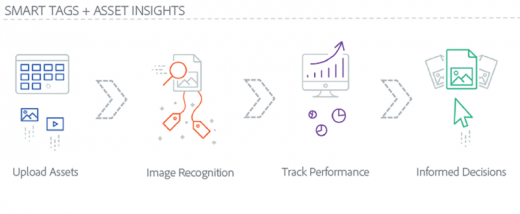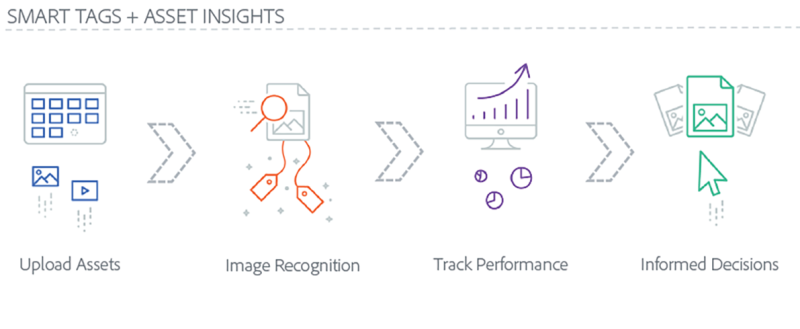Adobe unveils its subsequent-era advertising and marketing Cloud
It’s raining new options, together with a go-software Co-op, additional wise assistants, and a fuller integration between the Cloud and the Over-The-top video-oriented Primetime.
Adobe is unleashing today what it describes as the following-gen version of its advertising Cloud.
“advertising is really the experience industry,” director of product advertising Kevin Lindsay stated a press briefing, including that this latest free up enlarges the Cloud’s customer expertise capabilities.
There’s a truckload of additions, introduced on the firm’s Summit conference happening in Las Vegas. They embrace plenty of new algorithmic-based options to enhance purchaser experience and entrepreneurs’ insights, a new go-device Co-op, the brand new developer portal Adobe.io, and a deeper integration of Adobe’s online tv tools with the selling Cloud.
Taken together, they boost the Cloud’s population of clever assistants, carry over-the-top (OTT) tv deeper into this marketing platform’s ecosystem, and provide an enormous support to the continued challenge of matching folks to their many gadgets.
The basket of latest algorithmic options incorporates:
- sensible Tags in the advertising Cloud’s website-focused experience manager routinely tag visual content material in Adobe’s related ingenious Cloud, so that entrepreneurs can search by means of phrases like “summer season” or “children,” even if they haven’t tagged the fabric that means. right here’s Adobe’s visualization of smart Tags:
- A personalized television recommendation Engine in the new OTT model of Adobe Primetime. this feature bases viewing tips on more than 200 billion video consumption factors amongst US tv households that are streaming video, motion pictures or reside tv content, as well as your viewing habits throughout gadgets. Adobe noted that this goes a long way past the closed pool of knowledge Netflix attracts on to serve up suggestions.
- phase IQ for Adobe Analytics routinely compares behavioral variations between segmented audiences, in order that marketers can higher use those differences to sharpen their focused on.
- virtual Analyst, additionally for Adobe Analytics, is an sensible personal assistant that watches usage patterns to notice your priorities and then retains an eye out for adjustments in knowledge that might impact these priorities. Adobe provides the use case of the Analyst noticing that income is an important metric for you — as if that required a lot insight — however then the Analyst tracks metrics that impression earnings, like orders, devices and social media mentions. It also sends alerts when the relevant metrics commence to slip. here’s Adobe’s imagining of an alert from virtual Analyst:
- Lifetime worth determination in Adobe target employs behavioral knowledge to figure out the kinds and sequencing of product offers that could generate the very best spend from a purchaser. for example, Adobe stated, this feature would possibly suggest that a bargain for a computer, followed by using discounts for a reveal and a printer, will end in more sales to a given purchaser than, say, providing the whole cut price bundle at once.
- automated insight for Advertisers for Adobe Media Optimizer creates performance analyses of promotion, after which generates PowerPoint shows.
- Predictive topic traces for Adobe marketing campaign analyzes the open charges on earlier e mail subject lines in a model’s campaigns, in an effort to suggest among the finest ones. Spoiler alert: “model-new” continuously generates more opens than simply plain ol’ “new.”
move-tool Co-op
When Adobe launched its audience market last November, it took a big step towards permitting manufacturers to more simply share their first-party knowledge. in this new announcement, Adobe is venturing deeper into knowledge cooperation, with the launch of its cross-instrument Co-op within the 2d 1/2 of this year.
“devices don’t purchase merchandise,” major Product supervisor Asa Whillock brought up in the press briefing. “folks do.”
but these people steadily spend their days hopping between devices. determining that a person — ceaselessly no longer logged in — is identical individual on this smartphone in the morning, this pc throughout the day, and this pill at night time, is what engineers name “a non-trivial task.”
to track users across units, Whillock stated, marketers incessantly rely on applying “walled gardens” — a reference to facebook and Google’s environments — or on matching schemes built on possible but no longer convinced fits between devices.
The latter is a large set of devices, he referred to, but less accurate than logged-in customers on, say, facebook. whereas there are some huge person swimming pools constructed round logged-in users (such as the newly merged Viant/Time Inc.), facebook and Google are the kings of logged-ins.
but this new Co-op might begin to alter that state of affairs.
Adobe will use contributed logged-in data from any single brand to resolve teams of devices owned by means of an individual or household, with the next stage of accuracy than might in any other case be inferred probabilistically.
If the smartphone in a team of gadgets had visited, say, the web site of every other brand as an unlogged-in customer, the 2nd model will now comprehend that the smartphone belongs to a bunch of linked gadgets utilized by one particular person or family.
Adobe promises that users can choose out of this monitoring and that all users are anonymized. additionally, the company says that website online visits or identical behavioral histories might not be shared. So, the second model within the above example would be able to deal with an anonymized profile on the consumer across a couple of definitively identified devices, but, while tool teams will be shared, profiles is not going to.
Primetime OTT
the company estimates that the Co-op may hyperlink as much as 1.2 billion devices global, which would match the size of a fb or a Google.
If it works with out violating privateness or with out prompting a deluge of monitoring advertisements following a person, the Co-op could benefit both the user and the advertiser. Adobe provides the example of a person who is reserving a commute. She searches for lodge rooms on her pill via a trip company’s app, however she doesn’t ebook any. Later, on her laptop, she books a room on the website online of the identical trip company.
If the trip agency didn’t recognize she was once the same (though nameless) particular person on the pc and on the smartphone, they might ship lodge room commercials to her telephone, as a result of they knew she had looked for rooms on that software. but as a result of the Co-op, they are aware of it’s the same individual, so they are able to focal point on, say, sending her phone restaurant discounts in the city she’s visiting.
because website online visits and private history will not be shared, one query is whether or not the Co-op will have the facility of fb’s or Google’s environments.
Scott Denne, an analyst at analysis agency 451 research, contends this arrangement has totally different advantages.
“by using connecting the [Cross-Device Co-op] knowledge to target market supervisor and different merchandise,” he advised me by means of e-mail, “marketers can leverage this information in different advertising and marketing and promoting applications, something that can’t be executed with Google and facebook’s instrument fits.”
“The challenge for Adobe,” he added, “will likely be to realize a level of participation amongst entrepreneurs on the way to provide it the size to make a meaningful number of fits to compete with Google, fb and the emerging set of 0.33-party device id products and services.”
“If the trade incorporated more than software id information,” he mentioned, “it would be tougher to achieve participation.”
excluding the brand new sensible assistants and the move-tool Co-op, the 0.33 giant a part of as of late’s announcement is the enlargement of Adobe Primetime into a more fully integrated-with-advertising-Cloud OTT (over-the-prime) tv advertising and marketing instrument.
this permits, say, tv networks to deliver focused ad campaigns, A/B trying out, content material optimization, e-mail campaigns, notifications and different such marketing efforts with the Cloud’s instruments. this applies to customers observing television, video or motion pictures on cellular devices and computers, or on TVs delivered thru Apple television, Sony PlayStation, Roku and Microsoft Xbox. Launched in 2013, Primetime had been primarily oriented toward turning in video and ads to various screens, with some tie-ins to Adobe Analytics and Adobe manager.
“through integrating Adobe’s promotion, analytics, data management, advert campaign and personalization engines [in the Marketing Cloud] with the video playback, ad insertion and DRM [digital rights management] capabilities of Adobe Primetime,” Adobe Primetime vice chairman Jeremy Helfand said in a observation accompanying as of late’s announcement, “media firms are transforming their companies with extra customized and engaging viewing experiences across screens.”
comScore, Adobe.io, new accomplice software
a regular use case of the new marketing Cloud-integrated Primetime OTT, Director of Product advertising Campbell Foster informed me, is a smaller cable community that “wouldn’t have the tools to face up” an OTT model of itself.
The newly mixed platforms can now enable OTT marketers to build paying audiences, Adobe stated, by way of segmenting viewers in keeping with their viewing habits by the use of the Cloud’s Analytics and audience supervisor. Media Optimizer and goal can be utilized to develop audiences thru targeted advert buys across monitors, and goal additionally permits optimization through A/B trying out. And Adobe campaign can behavior email advertising and marketing efforts that draw on the new tv suggestions in Primetime to beef up shoppers’ viewing preferences.
“the combination of Primetime with the more than a few elements of Adobe advertising Cloud,” IDC program vice president Melissa Webster emailed me, “offers Adobe a significant aggressive benefit selling Primetime to broadcasters and MVPDs [Multichannel Video Programming Distributors].”
“nowadays,” she delivered, “content material providers are sourcing these kind of modules in my opinion, and construct the integrations themselves or with the assist of vendors or methods integrators. the opportunity for Adobe lies within the integration.”
additionally introduced: a brand new partnership with cross-platform measurement agency comScore, which Adobe says will provide “consistent, move-instrument dimension of video and advert content material” for media corporations and publishers who wish to measure throughout structures.
comScore target audience information shall be integrated into the promoting Cloud to help track throughout devices, and comScore will combine the newly announced Adobe Analytics-powered licensed Metrics that provides standardized census data.
“massive, census-stage information is critical to offering actionable and granular size across screens,” comScore CEO Serge Matta advised news media.
the new announcements additionally embrace a new Adobe.io developer portal with instruments for extending functionality of all the Adobe Clouds, a brand new companion program for Adobe alternate that helps such business actions for exchange app providers as advertising and gross sales enablement, and an up to date consumer interface for the Cloud.
(Some images used beneath license from Shutterstock.com.)
advertising and marketing Land – web advertising and marketing news, methods & guidelines
(54)


















